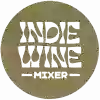Three Cubed Equals Wine
By Karl Klooster
If you came across something called “The Cube Project” what would you think it was? A plan to design the world’s best shipping box? Mathematicians mulling over the significance of square root?
You might ponder the fact that a cube is a hexahedron, a perfectly square, six-sided, three-dimensional object. Dice, for example, are like that. So are Rubik’s cubes.
But the folks involved in this project aren’t gambling. They are, however, striving to solve a puzzle of sorts by experimenting with a fascinating and likely very informative concept in winemaking.
It all came about a couple of years ago during the Steamboat Pinot Conference held annually at a rustic, wine and food-oriented, fishing retreat in the Cascade range east of Roseburg.
Conceived in 1980, Steamboat is a frank and honest, let-it-all-hang-out get-together of winemakers who bring their wines for constructive critiquing and even accolade heaping.
It started out as an all-Oregonian affair, but over the years invitations have been extended to Pinot producers from around the globe. The focus has always been on Pinot Noir.
At the 2010 Steamboat, Anne Amie winemaker Thomas Houseman made a rather novel yet intriguing proposal to two of his California winemaker friends also in attendance: Andrew Brooks of Bouchaine Vineyards at the southern end of the Napa Valley in Carneros and Leslie Renaud of Lincourt Vineyards in the Santa Rita Hills northeast of Santa Barbara.
Why not exchange grapes from each of their favorite vineyards and make wines from them? In other words, there would be nine wines in all, three from each winemaker.
This would be a unique opportunity to find out how each winemaker’s approach as well as the natural character of the fruit and its sense of place, or terroir, influenced the final product.
A handshake agreement was all it took to get the ball rolling, or, more accurately, the cube bouncing, since the three cleverly and quite appropriately dubbed their endeavor The Cube Project.
Houseman selected Annie Amie’s Estate Block 7.11. Brooks decided on Bouchaine’s Estate Block 43 and Renaud opted for Lincourt’s West Lindsay’s Vineyard Block W.
The winemakers oversaw a meticulously handpicked six tons from each block during the 2010 vintage. Two tons were then shipped to or retained by each participant.
Shipment was by refrigerated truck. None of the winemakers had worked with the others’ fruit before. Handling decisions had to be made upon arrival. It was a totally level playing field.
After crushing, fermenting, racking, filtering, barreling and, finally, bottling, the 2010s were recently released, eliciting comments understandably transfixed on similarities while unable to deny differences.
The process was repeated in 2011. Samples of those wines, still in barrel, have been shared among the wineries. Though all were declared in excellent condition, more time is needed for them to fully develop.
Of course, there is always the possibility that Mother Nature can alter the equation. And the Yamhill Valley is more vulnerable than either the Napa or Santa Ynez valleys.
Northwestern Oregon dodged a weather bullet in 2010 and came away with a small but outstanding vintage. The so-called “miracle harvest” of 2011 saw a salvo of big hurt stopped at the 11th hour.
A long, cool summer made the 2010 harvest a nail-biter right down to picking at some of the latest dates on record. Fortunately, that benefited what remained of the long maturity-loving Pinot.
In a second straight year departure from the norm, rains and atypically low temperatures afflicted Northern California during 2011 with heat spikes at the very end. Careful sorting resulted in good fruit.
To discover where the recently bottled 2010s stood at a recent tasting, doing it blind wasn’t necessary.
A side-by-side comparative determined: a) Each wine was flawlessly made and of very high quality; b) Each presented individual profiles while remaining true to the variety; and c) The wines from each vineyard expressed distinctively identifiable characteristics.
In other words, nine fine Pinot Noirs from top-flight fruit, each standing on its own owing to a combination of components unique to it while expressing and benefiting from a shared component.
Despite the possible power of suggestion, Anne Amie’s three sides of the cube did, indeed, show their place-of-origin differences as well as stylistic similarities.
Anne Amie’s 7.11 Block expressed Oregon with nature’s contribution of earthiness while Houseman robed its spicy, layered flavors in soft tannins and bright acidity.
Brooks’ Estate Block 43 from Bouchaine had a pretty, floral perfume upfront, influenced by both oak and fruit, with more prevalent youthful tannins present at this point.
Bright fresh berry gave Lincourt’s Block W an immediate appeal, which Renaud used to introduce a rich, well-structured palate with hints of minerality and herbaciousness.
In summarizing his comments on the Project, whose last year will be 2012, said, “The winemaker’s hand is dominant in the differences now, but I’m getting how remarkable it is that I can also taste a region.”
Want to savor the differences and similarities of The Cube Project for yourself? The winery has 100 cases of each. Nine packs cost $400; three packs are $150 — available on www.anneamie.com or at the winery.












